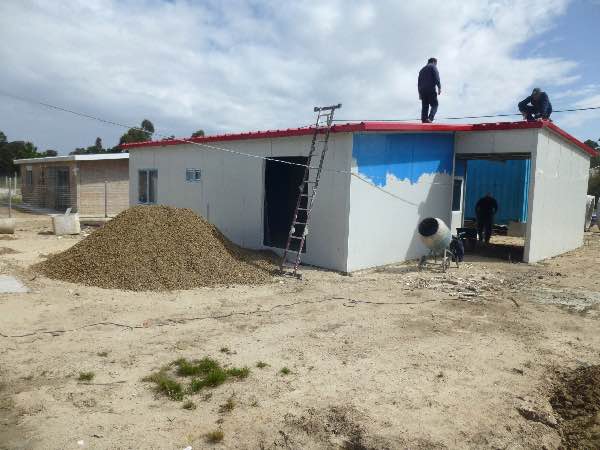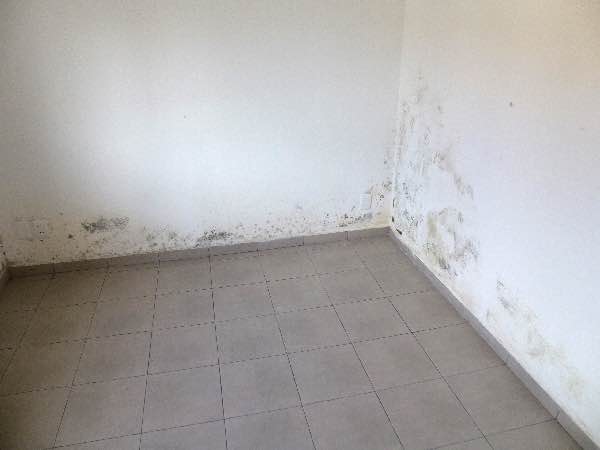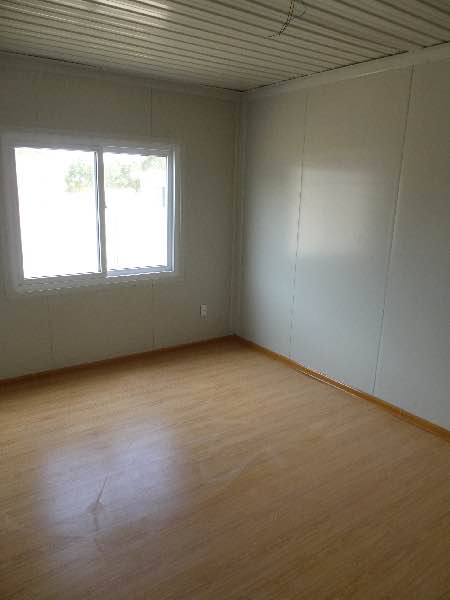Friends are buying a lot and want to build a rental house. Recently they visited a construction expo in Montevideo and became fascinated with prefabricated houses imported from Australia. Today we went with them to view a couple of them.
The prefab house in the foreground is built to the same plans as the single-brick house in the background. The one in the foreground is less than a month into construction, and will be complete in less than two months from start. The one in back took two years.

Additionally, the prefab is extremely well insulated. The vertical wall elements are filled with flammable styrofoam, but isolated from one another. In other words, each is its own cell, so even if one caught fire inside, it would not easily spread. Meanwhile, in the “wet” (traditional) construction house, which has never been occupied, the excessive moisture and lack of ventilation has created (typical) mold problems. Again, before people have even been living — and breathing — in that space.

I don’t have comparative costs, but two months versus two years, excellent insulation versus no insulation and moisture problems — should be a no-brainer, eh? Well, there’s something lacking in the warm-and-fuzzy department in the interiors of the prefabs.

The “wood” floor doesn’t really remediate the shiny walls and industrial ceiling.

And then the details ….

In the end, though, you must consider that this is “cheap for rental” construction. This could be done with an impressive crown molding, but in this case the owner doesn’t give a shit (no offense, Joe). In fact, there’s supposed to be a video on their site, but I didn’t find it on a quick perusal (tonight’s pizza night; I’m on duty). One could easily do a lambriz (thin tongue and groove) ceiling which would be much more simpatico.
You can make the walls much more attractive with textured paint. All a question of cost. Still, pretty exciting stuff, Isopanel.
I guess good builder’s supply places don’t exist in UY?
Not sure what you’re getting at. Builder’s supply places, barracas, are ubiquitous. But, as in Mexico where we lived, innovation is not a hard-wired concept. There’s little in the construction of the house we bought, for example, that would be surprising to my grandfather. But change is coming. In the last couple years, the first “Home Depot,” called Sodimac, opened in Carrasco (next to Montevideo, location of the airport). Many places have sprung up that make buildings with Isopanel, pretty much the same stuff but without end barriers for fire.
Also steel framing (actually called steel framing, or construcción en seco) is catching on. That will be interesting to watch, given sheetrock (yeso, pronounced jeso), humidity, mold, and the reluctance of Uruguayans to heat their houses. To me it’s a recipe for disaster, but time will tell.
…… can’t see any mold problem !!
In Uruguay the call “this color” the “different shades of grey”.
Or simply don’t see it. Or “es lo que hay.”